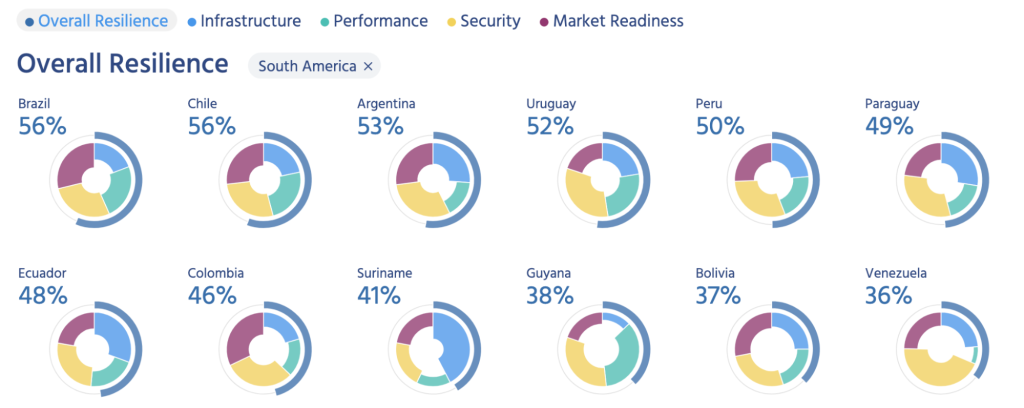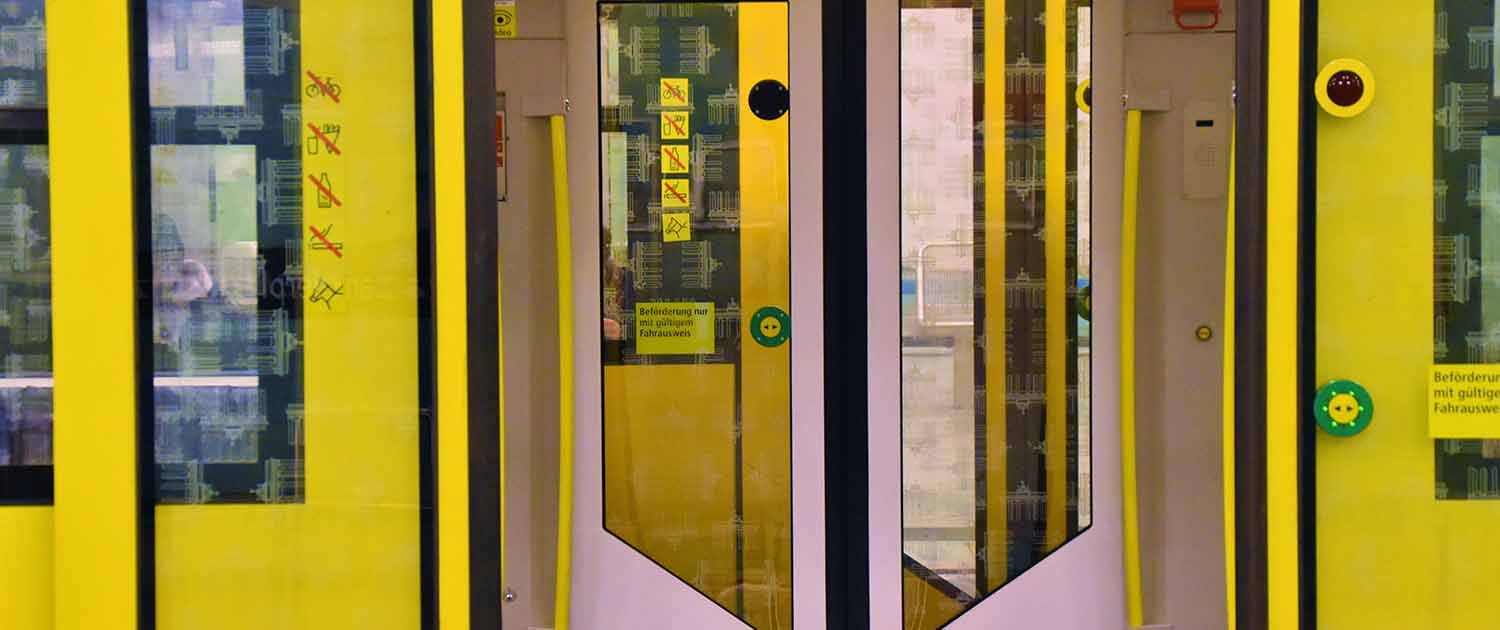South America’s three smallest economies—Guyana, French Guiana, and Suriname—recently increased their international Internet capacity and future Internet resilience thanks to a new submarine cable (Deep Blue One) connecting them to Trinidad and Tobago.
A region locally referred to as Guiana, an indigenous word for “Land of Many Waters,” the three economies—French Guiana is an Overseas Department of France, so it is not a country—are among the most sparsely populated (per land area). Fewer than two million people live predominately along the region’s northern Atlantic coastline, hemmed in by more than 90% Amazonian forest that isolates them from their southern neighbor, Brazil.
Pulse doesn’t currently track submarine or cross-border terrestrial cable numbers or capacity or how these contribute to a country’s Internet resilience. But we recognize that this new submarine cable comes at an important time, particularly for Guyana and Suriname, which are undergoing diverging development trajectories that similar developing economies around the world are facing.
As such, let’s examine their current Pulse Internet Resilience Index (IRI) profiles to see where their leaders may want to focus their development to take advantage of the benefits that new and future submarine cables can bring to their countries.
Infrastructure is One Part of the Resilience Puzzle
Following their years of colonialism, very little separated Guyana and Suriname—except their adopted languages of English and Dutch—until around 1960, when Suriname’s economy excelled thanks to its aluminum production.
But, things have abruptly changed since 2015, with Suriname’s economy contracting by more than 10% and its dollar more than halving in 2016 due to its dominant alumina plant closing and the country moving to a floating exchange rate. Conversely, Guyana’s economy has skyrocketed since 2020 (see figure below), from USD 6,863 to USD 20,626 GDP per capita, thanks to recent offshore oil reserve discoveries.
Figure 1 — GDP per capita (current USD). Source: World Bank.
Interestingly, this change in economic fortunes does not correspond to any change in each country’s Internet resilience. According to the IRI (Figure 2), Suriname has a higher Internet resilience than Guyana.

If we zoom into each country’s Internet resilience profile, we can see that Suriname’s exceptional infrastructure resilience predominantly separates the two countries.
Figure 3 — Overall Internet resilience for Guyana and Suriname and each of the pillars contributing to it: Infrastructure, Performance, Security, and Market Concentration. Source: Pulse Internet Resilience Index.
Much of this is thanks to its more expansive fiber network (abeit predominantly controlled by the major Internet Service Provider (ISP), TeleSur, and the enabling infrastructure (data centers and Internet Exchange Point) that Suriname has established, but Guyana has not yet (see figure below).
Figure 4 — Overall infrastructure resilience for Guyana and Suriname and each of the indicators that contribute to market resilience. Source: Pulse Internet Resilience Index.
Having an IXP and data centers has helped Suriname keep a sizable amount of its popular traffic local (Figure 5), an especially important factor given that the country has only had one submarine connection (though it has had cross-border terrestrial connections with Guyana and French Guiana).
Figure 5 — More than 50% of Suriname’s 1,000 most popular websites are hosted in-country or in-region.
Keeping traffic local instead of accessing it from abroad makes the Internet faster and cheaper, as traffic doesn’t need to travel as far or via expensive international transit routes. Read about the Internet Society’s ambitious plan to keep at least half of all Internet traffic in selected economies local by 2025.
A Healthy Market is Equally Important
While data centers and its IXP are likely helping to this end, other factors are clearly hindering overall performance and affordability in Suriname, given that Guyana has far more affordable (76% vs. 51% — see figure 6, blue column) and far better performing (54% vs. 25%) Internet. This advantage may stem from additional competition in Guyana, thanks to a third operator entering the market in 2022.
Figure 7 — Overall market readiness resilience for Guyana and Suriname and each indicator contributing to market resilience. Source: Pulse Internet Resilience Index.
According to IIJ’s Internet Health Report, more than 86% of Suriname’s population is connected via the country’s incumbent Internet Service Provider (ISP), TeleSur (AS27775). In Guyana, the market is still dominated by the incumbent, Guyana Telephone & Telegraph (AS19863), but their market share is far less (63%). This is reflected in Guyana having a stronger (though still moderate) ‘Market diversity’ score than Suriname, too (16% vs 7% — see figure 6, yellow column)
Guyana should see this market diversity figure increase further following the government’s decision to offer licensing exemptions to around 50 small ISPs to help expand the country’s telecommunications sector. This market competition is hoped to help stimulate network development and expansion, particularly last-mile delivery to regional and remote regions.
According to local reports, Digicel, Deep Blue One’s owner, has a pending application to provide international connectivity to Suriname (Telesur currently provides 86% of international connectivity. If approved, this will help with achieving the country’s ICT Vision 2030, which recognizes the need to expand “access, accessibility, affordability, and use in all districts, regions and for all people.”
In its Digital Readiness Assessment of Suriname, the UNDP offers several other recommendations as to how it can meet its Vision, including the need for:
- Further digitalization or priority e-government services—Suriname’s current E-Government Development Index score is 53%.
- Improved funding, procurement modalities, and business development support.
- Discussions, strategies, and activities to strengthen national cybersecurity.
- Explore regulations that could address competitive challenges in e-commerce.
- Digital skills development and inclusion of vulnerable groups.
This should not discount the benefits that the new submarine cable brings to each country, but it highlights that infrastructure is only one consideration in developing greater and broader Internet resilience.


